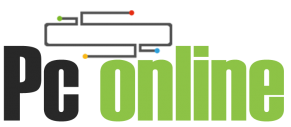Linux server is a great platform that offers a myriad of benefits to the user in terms of flexibility and power. However, Linux server administrators must ensure a safe and secure connection with any network-connected machine.
This article will equip you with the necessary knowledge about the commonest security measures to implement in a Linux server environment.
Block unauthorized access using Firewalls
The simplest way to secure your network is by enabling and configuring a firewall. It works as a barrier between your machine and the overall traffic of the internet. Well-balanced and rational firewall rules offer a good basis for network security. Some of the best firewall solutions to use in your Linux vps systems are UFW, IPTables, IP6Tables, NFTables, etc.
If you are thinking about how to secure Linux VPS, visit Monovm VPS. It is a leading company that offers top-of-the-line hosting service plans at unbelievable rates. Some of their services include Linux Web Hosting, VPN hosting, dedicated servers, and more.
Use SSH for secure remote login
If you do not have local access to administer a Linux server, then you will need to log in remotely. SSH or secure shell protocol is a standard and safe way to do this job.
This service offers end-to-end encryption, X-forwarding, and ability to tunnel unsafe traffic over a safe connection. It is a flexible authentication model that enables users to sign in with the help of various methods.
Password authentication
Password authentication/ logins enable an intruder to guess passwords until you find a successful combination. The downside of this approach is that it can be easily automated by attackers equipped with modern tools. This makes it a less secure way of authentication.
Install an antivirus or antimalware software
The prime task of a firewall is to prevent access to sources that involve malicious traffic. When choosing between the free or paid malware solutions, their revenue stream enables them to recruit talented researchers and programmers who ensure that the software remains relevant.
Turn on content management auto-updates
Hackers look for security loopholes in the content management system of a website. To ensure advanced level protection, many CMS developers release security fixes and new features from time to time. It helps them automatically update the CMS and applies the fix as soon as the new version is released. Also, take regular back-up of your CMS.
Install a rootkit scanner
A rootkit is a very dangerous malware that exists at the OS level under other normal security software. It enables unnoticed entree to a server. “Chrootkit” is an open-source tool that helps figure out whether the server is infected or not. It is not easy to eliminate rootkits. The right way to fix them is by reinstalling the Operating System.
Conclusion
Security implementation is an ongoing task that includes auditing the system, evaluating alerts, and logs, implementing solutions, revaluating needs, etc. By being vigilant in securing and monitoring the system and evaluating the outcome of the solutions, you can easily prevent potential threats.


